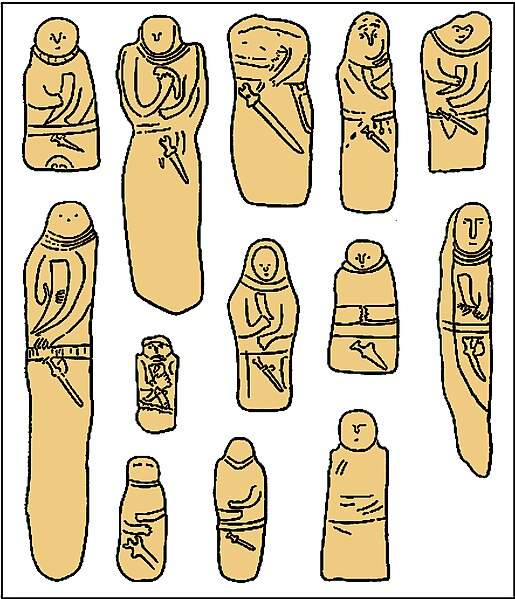A drinking horn is the horn of a bovid used as a drinking vessel. Drinking horns are known from Classical Antiquity, especially the Balkans, and remained in use for ceremonial purposes throughout the Middle Ages and the Early Modern period in some parts of Europe, notably in Germanic Europe, and in the Caucasus. Drinking horns remain an important accessory in the culture of ritual toasting in Georgia in particular, where they are known by the local name of kantsi.
The Roordahuizum drinking horn, made in the mid-16th century by silversmith Albert Jacobs Canter, kept in the Frisian Museum at Leeuwarden
Drinking Horn with Silver-gilt Mounts (detail), Northern German or Scandinavian, Late 15th century, The Hunt Museum
Collection of drawings of Scythian stelae of the 6th to 5th centuries BC. Many of them depict warriors holding a drinking horn in their right hand.
The Hochdorf drinking horn (iron with sheet gold ornaments, capacity 5.5 litres)
A horn is a permanent pointed projection on the head of various animals that consists of a covering of keratin and other proteins surrounding a core of live bone. Horns are distinct from antlers, which are not permanent.
In mammals, true horns are found mainly among the ruminant artiodactyls, in the families Antilocapridae (pronghorn) and Bovidae. Cattle horns arise from subcutaneous connective tissue and later fuse to the underlying frontal bone.
A pair of horns on a male impala
Anatomy and physiology of an animal's horn
Goat skull piece
African buffalo (both sexes have horns)








